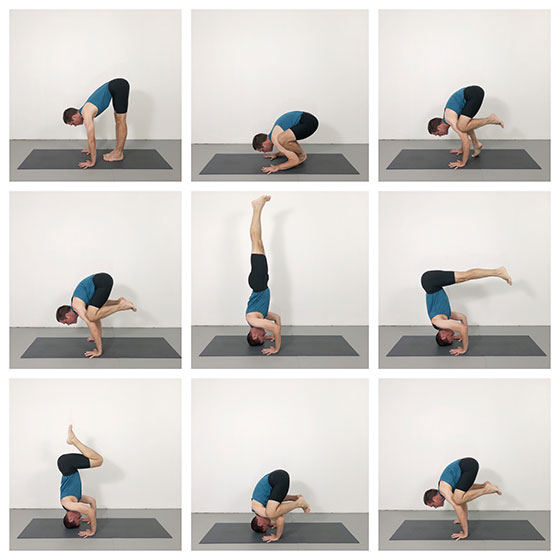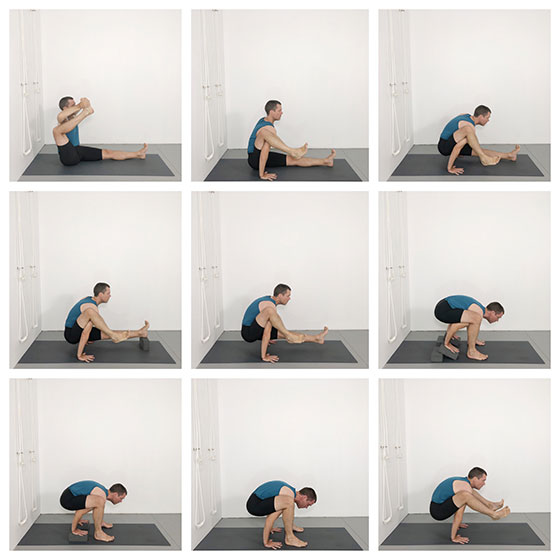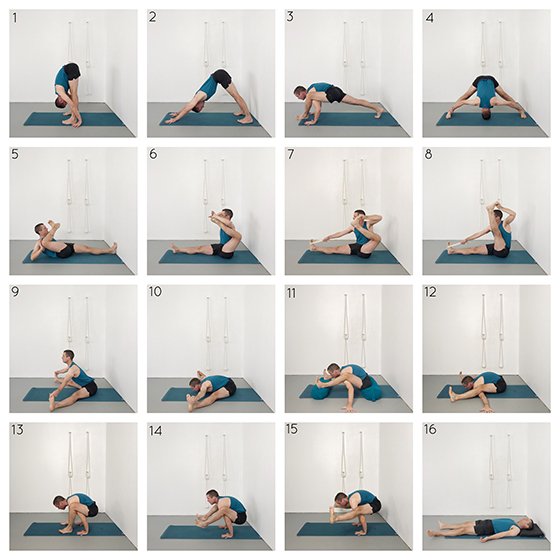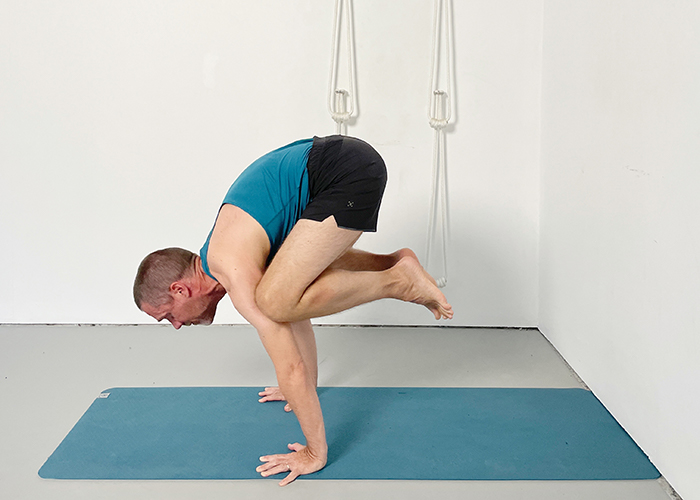Understanding Yoga Arm Balances
Yoga Arm balances are challenging poses that require strength, balance, and focus. They involve balancing on the hands while engaging the core and often lifting the legs off the ground. Arm balances target the arms, wrists, core, and other muscle groups, offering benefits such as increased upper body strength, improved balance, and enhanced mental concentration. In this step-by-step guide, we will explore four challenging arm balances—Bakasana, Eka Hasta Bhujasana, Dwi Hasta Bhujasana, and Tittibhasana—and provide valuable insights into their practice.
Explore a World of Online Yoga. Unlimited Access to All Classes and Courses.
Try it Free for 14 days. Cancel Anytime.
Bakasana: Cultivating Strength and Balance
Bakasana, also known as crane or crow pose, is a challenging yoga pose that requires balancing on the hands with the knees resting on the upper arms. It strengthens the wrists, arms, and abdominal muscles while opening and toning the inner groins. Regular practice of Bakasana builds inner strength, resilience, and improves overall posture.

Bakasana (Crane/Crow Pose) – Weekly Advanced Class 218
Discover the art of Bakasana (Crane Pose) and Kakasana (Crow Pose) through this comprehensive video class suitable for both newer and experienced practitioners. This step-by-step tutorial begins with preparatory variations using props, fostering confidence and familiarity with the poses. These strengthening variations not only offer benefits on their own but also progressively guide you towards advanced versions of Bakasana and Kakasana. Troubleshooting common challenges, this class highlights the regular practice of Bakasana for strengthening the wrists, arms, and core, while toning the inner groins and promoting release in the upper back and thoracic spine.

Bakasana From Sirsasana 2 – Weekly Advanced Class 124
Building upon techniques from the previous class, this video teaches you how to seamlessly integrate the three-point head balance (Sirsasana 2) with Bakasana. It offers you a challenging yet enjoyable opportunity to deepen your understanding of this renowned arm balance.
Further Exploration of the Yoga Arm Balance Bakasana:
For further exploration of Bakasana techniques, our detailed blog article titled “Bakasana – Mastering the Pose from an Iyengar Perspective” provides a step-by-step guide. Click here to access the blog article and unlock the secrets of Bakasana.
Eka Hasta Bhujasana (Elephant Trunk Pose)
Eka Hasta Bhujasana, also known as Elephant Trunk Pose, is an advanced arm balancing pose that requires strength, balance, and flexibility. In this pose, the practitioner supports their body on one arm while extending the opposite leg upward, resembling the trunk of an elephant. Eka Hasta Bhujasana targets the arms, core, and legs, providing a challenging yet rewarding experience for those who practice it. In this comprehensive guide, we will explore the key elements of this pose and learn how to practice it effectively.

Eka Hasta Bhujasana – Weekly Advanced Class 216
In this yogaselection.com online yoga class, we focus on Eka Hasta Bhujasana (Elephant Trunk Pose), an empowering arm balancing pose that significantly enhances overall body strength. This tutorial-style session offers a step-by-step exploration of the pose, isolating key actions and troubleshooting common challenges that may arise during practice. Alongside the classical unassisted version, alternative approaches and modifications are shared to assist students working with restrictions. Discover techniques utilising yoga blocks to lift and support your body weight. Whether you’re new to the arm balancing group or seeking to deepen your practice, this class caters to students of all levels, providing valuable insights and guidance.
Further Exploration of the Yoga Arm Balance Eka Hasta Bhujasana:
For further exploration of Eka Hasta Bhujasana techniques, our detailed blog article titled “Eka Hasta Bhujasana (Elephant Trunk Pose): A Step-by-Step Guide” provides a step-by-step guide. Click here to access the blog article and unlock the secrets of Bakasana.
Dwi Hasta Bhujasana
Dwi hasta bhujasana, or the Two Handed Arm Pose is a challenging yoga posture that strengthens the arms, chest, and abdominal muscles while cultivating inner strength. By starting in uttanasana and positioning the shoulders under the knees, the practitioner compactly places their hands on the floor behind their heels. With a controlled weight transfer and balance, the feet gradually lift off the ground, allowing for an extended leg position.

Dwi Hasta Bhujasana – Weekly Advanced Class 146
In this class, we delve into the art of Dwi Hasta Bhujasana, an invigorating arm balancing pose. The session is thoughtfully structured, breaking down the pose into clearly defined stages that gradually progress from initial key actions to the final expression. We also present alternative approaches and modifications to cater to students with restrictions or limitations. This class is suitable for both beginners in the arm balancing realm and experienced practitioners seeking to deepen their understanding and refine their technique. Join us on this transformative journey of mastering Dwi Hasta Bhujasana.
Further Exploration of Dwi Hasta Bhujasana:
For further exploration of Dwi Hasta Bhujasana techniques, our detailed blog article titled “Dwi Hasta Bhujasana” provides a step-by-step guide. Click here to access the blog article and unlock the secrets of Dwi Hasta Bhujasana.
Tittibhasana (Firefly Pose): Yoga Arm Balance and Hip Mobility
Tittibhasana, also known as Firefly Pose, is an advanced arm balance in yoga. It involves balancing on the hands while extending the legs straight out in front of the body. The pose requires strong core engagement, hip flexibility, and upper body strength to maintain stability and lift the feet off the ground.

Tittibhasana – Weekly Advanced Class 179
In this class, we explore the profound connection between hip opening poses such as Kurmasana and arm balancing poses like Dwi Hasta Bhujasana and Tittibhasana. These arm balances not only demand overall body strength but also rely on hip mobility. By cultivating freedom of movement in the hips, the reliance on sheer muscular effort in arm balances can be diminished. This transformative approach brings a sense of lightness and ease to these poses, reducing the need for brute strength. Discover a fresh perspective as we delve into familiar poses, empowering you to strengthen your upper body, abdominals, and legs while enhancing hip mobility.
Further Exploration of Tittibhasana:
For further exploration of Tittibhasana techniques, our detailed blog article titled “Tittibhasana (Firefly Pose)” provides a step-by-step guide. Click here to access the blog article and unlock the secrets of Tittibhasana.
Yoga Arm Balances: Strength, Resilience, and Balance
Arm balances provide an opportunity to develop physical strength, mental resilience, and balance. These challenging poses can be practiced anywhere, making them ideal for those currently confined to their homes. Experience the transformative effects of Bakasana, Eka Hasta Bhujasana, Dwi Hasta Bhujasana, and Tittibhasana by following our step-by-step guide.
Explore Specialised Yoga Courses at Yoga Selection
The classes discussed in this article can be found on yogaselection.com. Yoga Selection is a comprehensive online platform offering a wide range of yoga classes, courses and resources, including specialised courses targeting specific regions of the body.
As a Yoga Selection member, you gain unlimited access to our extensive video library, featuring over 650 on-demand classes. Additionally, explore a diverse range of courses, with two new videos released every week.
Experience the flexibility of joining live classes in real time, allowing for personalised guidance and support. Immerse yourself in a vibrant community that nurtures your growth and provides valuable resources for your yoga practice.
Explore a World of Online Yoga. Unlimited Access to All Classes and Courses.
Try it Free for 14 days. Cancel Anytime.
Share:
See related posts:
